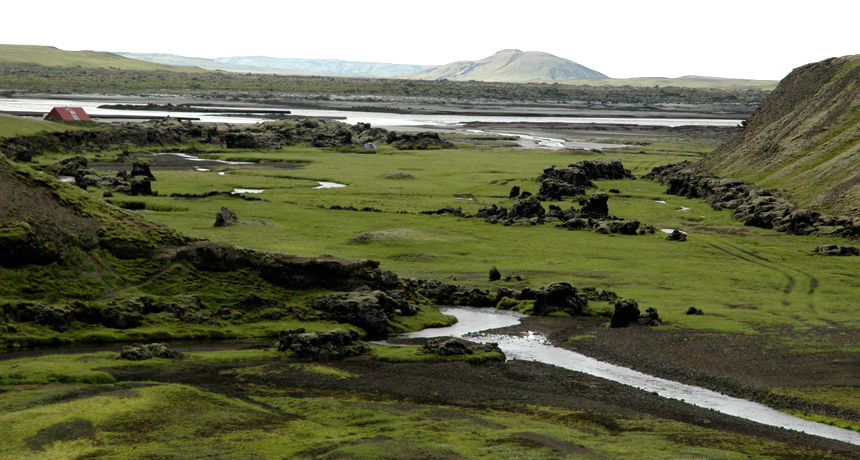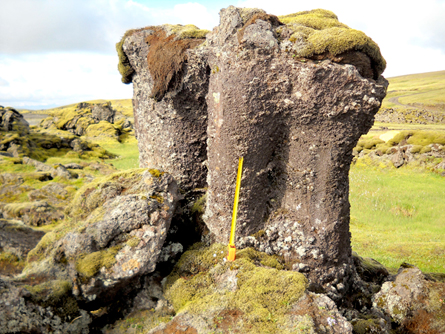Wet terrain responsible for Iceland’s hollow lava towers
Normally found underwater, the rocky structures form on land too

VALLEY VIEW The rocky remnants of a past lava flow dot Iceland’s Skaelingar valley. Hollow pillars formed as hot lava crept over water-logged land.
Courtesy of T. Gregg







